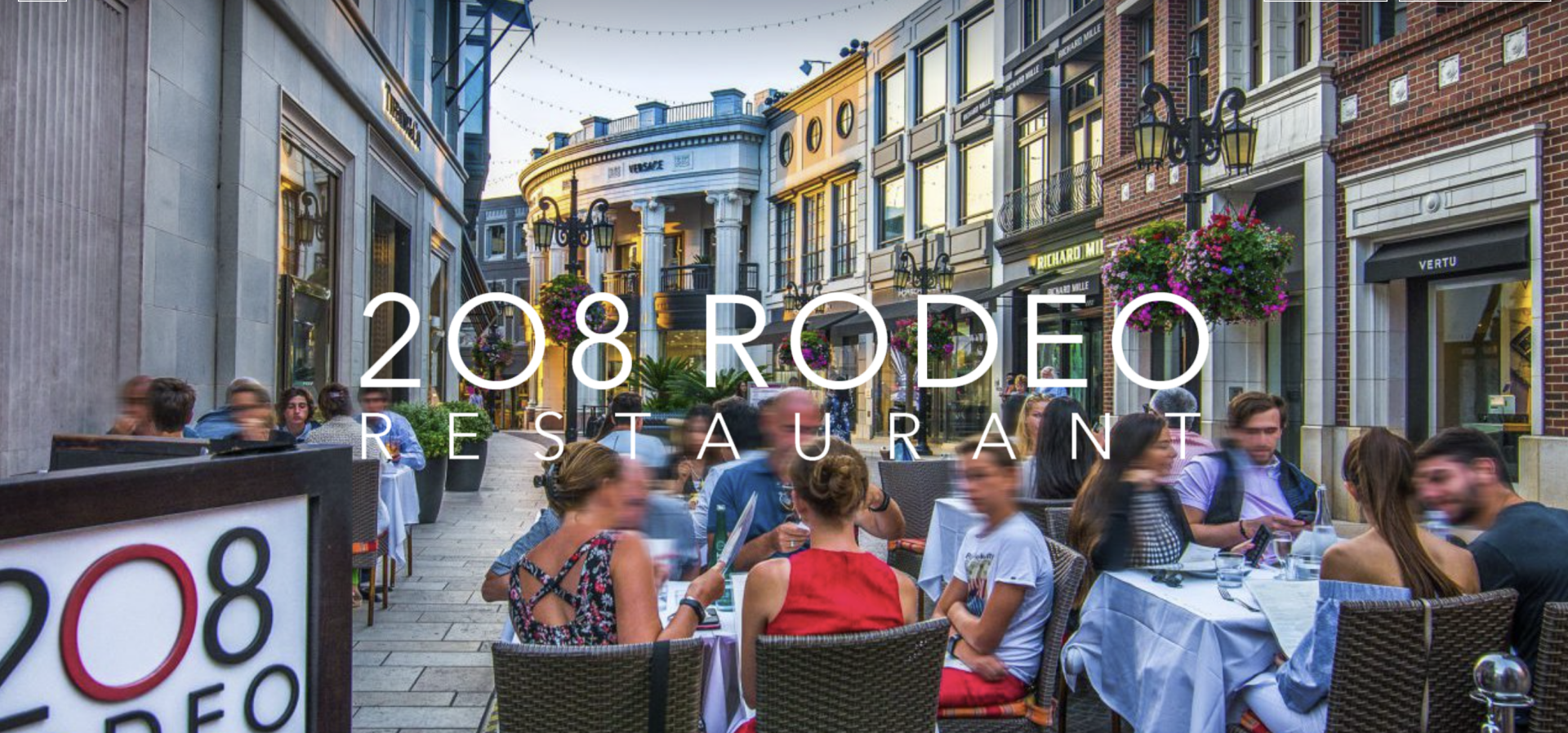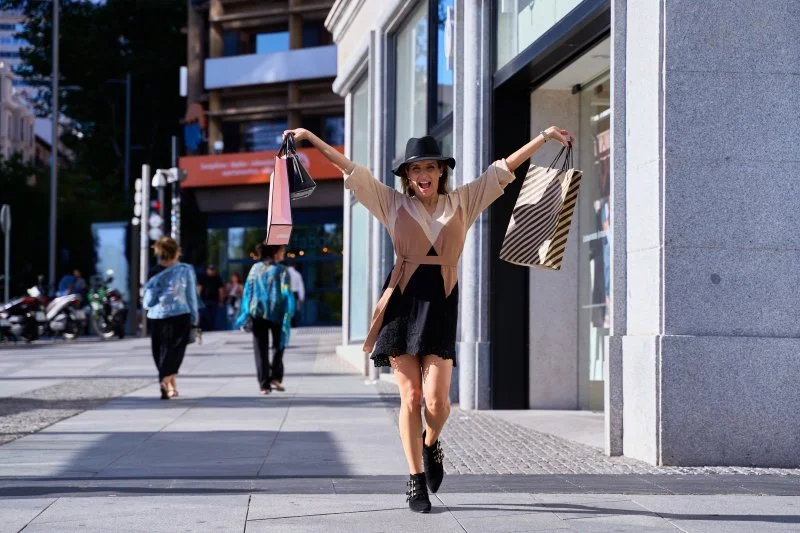
Rodeo Drive | Beverly Hills
A Quick Rodeo Drive-By.
Lat. 34.073620 | Long. -118.400352
1920s–1940s: The Rise of Hollywood Glamour
During the 1920s, Beverly Hills became a popular home for Hollywood stars, cementing its reputation as a glamorous enclave. Celebrities such as Douglas Fairbanks and Mary Pickford built lavish homes in the area, attracting others to follow. The city's exclusivity and proximity to Los Angeles made it an ideal location for film industry elites.
During this time, iconic streets like Rodeo Drive began to develop, laying the foundation for Beverly Hills as a hub for luxury shopping and lifestyle.
-
Early History: Native Americans and Spanish Settlement
The area now known as Beverly Hills was originally inhabited by the Tongva people, Native Americans who lived in the Los Angeles basin for thousands of years. They relied on the area's natural springs and fertile land. In the late 18th century, Spanish colonization began, and the land became part of the Rancho Rodeo de las Aguas, a vast ranch used for cattle grazing.19th Century: Mexican Land Grants and Agricultural Beginnings
Following Mexican independence in 1821, the area was granted to María Rita Valdez, a Mexican widow, in 1838. She built an adobe home near the present-day intersection of Sunset Boulevard and Alpine Drive. The land remained primarily agricultural, used for growing lima beans and other crops.In 1868, the rancho was sold to Edward Preuss, who attempted to turn it into a community called "Morocco," but the project failed. By the late 19th century, the land changed hands several times, primarily being used for farming and ranching.
1900s: Founding of Beverly Hills
In 1906, the Rodeo Land and Water Company purchased the land with the intention of drilling for oil. However, oil exploration yielded limited success, and the company decided to develop the area into a residential community instead. The land was divided into lots, and the name "Beverly Hills" was chosen, inspired by Beverly Farms in Massachusetts and the surrounding rolling hills.The Beverly Hills Hotel and Growth of the Community
The Beverly Hills Hotel opened in 1912, becoming the centerpiece of the new community and attracting wealthy visitors. Its success helped establish Beverly Hills as a desirable location for the elite. By 1914, Beverly Hills was incorporated as an independent city.1920s–1940s: The Rise of Hollywood Glamour
During the 1920s, Beverly Hills became a popular home for Hollywood stars, cementing its reputation as a glamorous enclave. Celebrities such as Douglas Fairbanks and Mary Pickford built lavish homes in the area, attracting others to follow. The city's exclusivity and proximity to Los Angeles made it an ideal location for film industry elites.During this time, iconic streets like Rodeo Drive began to develop, laying the foundation for Beverly Hills as a hub for luxury shopping and lifestyle.
Post-World War II: Development and Global Recognition
The post-war era saw Beverly Hills expand and solidify its status as a global symbol of wealth and luxury. By the 1950s and 1960s, it was renowned for its high-end shopping, world-class restaurants, and iconic hotels like The Beverly Hills Hotel and the newly built Beverly Hilton.Modern Era: Icon of Luxury and Culture
Today, Beverly Hills is synonymous with opulence, home to sprawling estates, high-end boutiques, and a vibrant entertainment industry. Landmarks such as Rodeo Drive, the Greystone Mansion, and the Beverly Hills Hotel remain cultural and architectural icons. The city continues to attract international visitors, celebrities, and affluent residents, maintaining its legacy as a symbol of glamour and sophistication.Beverly Hills has evolved from a quiet ranching area to one of the most famous and affluent cities in the world, a testament to its unique blend of history, culture, and allure.
Beverly Hills is globally renowned as a premier shopping destination, with its iconic Rodeo Drive standing alongside Fifth Avenue in New York, Bond Street in London, Avenue Montaigne in Paris, and Ginza in Tokyo. Spanning three palm-lined blocks in the heart of the Golden Triangle, the city's central business district, Rodeo Drive features over 100 world-famous stores. Visitors are easily captivated by its distinctive allure and elegance. SHOPPING GUIDE.

Beverly Wilshire
At the intersection of Rodeo Drive and Wilshire Boulevard lies the Beverly Wilshire, A Four Seasons Hotel, one of Beverly Hills' oldest and most luxurious landmarks. Built in 1928, this legendary hotel has hosted iconic figures such as Warren Beatty, John Lennon, and Elvis Presley. Today, it is famously recognized as the "Pretty Woman hotel," having served as a backdrop for scenes from the beloved film starring Richard Gere and Julia Roberts.
The hotel boasts exceptional dining experiences, including THEBlvd, where guests can enjoy California cuisine with Mediterranean influences under soaring ceilings or on a patio overlooking the renowned Rodeo Drive. For a fine dining experience, Michelin-recommended CUT by celebrity chef Wolfgang Puck offers some of the finest steaks and seafood in the country, presented in a sleek, modern space designed by Richard Meier, the Pritzker Prize-winning architect of The Getty Center. The hotel’s two lounges, CUT Lounge and THEBlvd Lounge, provide an inviting setting for small plates, signature cocktails, and an extensive wine selection.
A visit to the Spa at Beverly Wilshire is not to be missed. This Forbes Five-Star Spa offers a tranquil retreat to rejuvenate both mind and body. Even if you’re short on time, take a moment to appreciate the grandeur of the hotel’s lobby, adorned with seasonal floral displays and illuminated by an opulent crystal chandelier.
This is the legendary LA hideaway, famous for playing host and friend to Hollywood royalty for over a century. From the deals made in the Polo Lounge to the romances lived out in the secluded bungalows, this has been Tinsel Town’s playground since Beverly Hills was born.
Frette 1860
Just across the street from Beverly Wilshire, A Four Seasons Hotel, sits Two Rodeo Drive, Beverly Hills’ own European-style shopping enclave complete with a cobblestone walkway, street lamps and floral displays. World-renowned brands from Versace, Jimmy Choo and Lanvin, to Tiffany & Co. are found here. For outdoor dining, try 208 Rodeo Restaurant, offering beautifully presented and imaginatively prepared California cuisine with views of an elegantly curved European-style cobblestone walkway.
For the perfect photo to add to your collection of Beverly Hills memories, strike a pose in front of the stairs and fountain on the south end of Two Rodeo Drive, as well as the famous Via Rodeo sign on the north end of the cobblestone street.
Gianni Versace's designs often drew inspiration from art, mythology, and pop culture, blending classic motifs with modern glamour. After his untimely death in 1997, his sister Donatella Versace took over as the creative director, continuing the brand's legacy while infusing her distinctive vision.

Anderton Court
Wright’s only retail space built in Southern California sits on fashionable Rodeo Drive. Six boutiques across three floors are arranged around a central light well and connected by cantilevered ramps in the front and center of the building. A unit on the third floor was designed as a penthouse apartment. A penthouse studio is located above this space. Wright designed the façade as an inverted V to maximize usable floor space. Changes inconsistent with Wright’s original design have been made throughout the years. There are no organized tours but shops can be visited during retail hours. Givenchy.
Rodeo Drive
Wilshire Boulevard
to Santa Monica Boulevard
Rodeo Drive’s unparalleled shopping experience has earned it a reputation as one of the most prestigious retail destinations, not only in California but worldwide. With over 100 boutiques offering the finest in fashion, handbags, shoes, home accessories, and jewelry, Rodeo Drive stands on par with the globe's most celebrated shopping districts. A visit isn’t complete without stepping into flagship stores like Chanel, Hermès, Cartier, Louis Vuitton, Loewe, and Harry Winston, where you’ll find their full collections, including exclusive pieces available only at their Rodeo Drive locations.
Did you know that a MICHELIN-starred restaurant graces the rooftop of Gucci? Gucci Osteria da Massimo Bottura in Beverly Hills is the Californian extension of the brand's iconic Florentine restaurant. Since its opening in February 2020, Gucci Osteria has embodied the House of Gucci's values of creativity, inspiration, and inclusivity, offering a dining experience as exquisite as the luxury fashion it represents.















